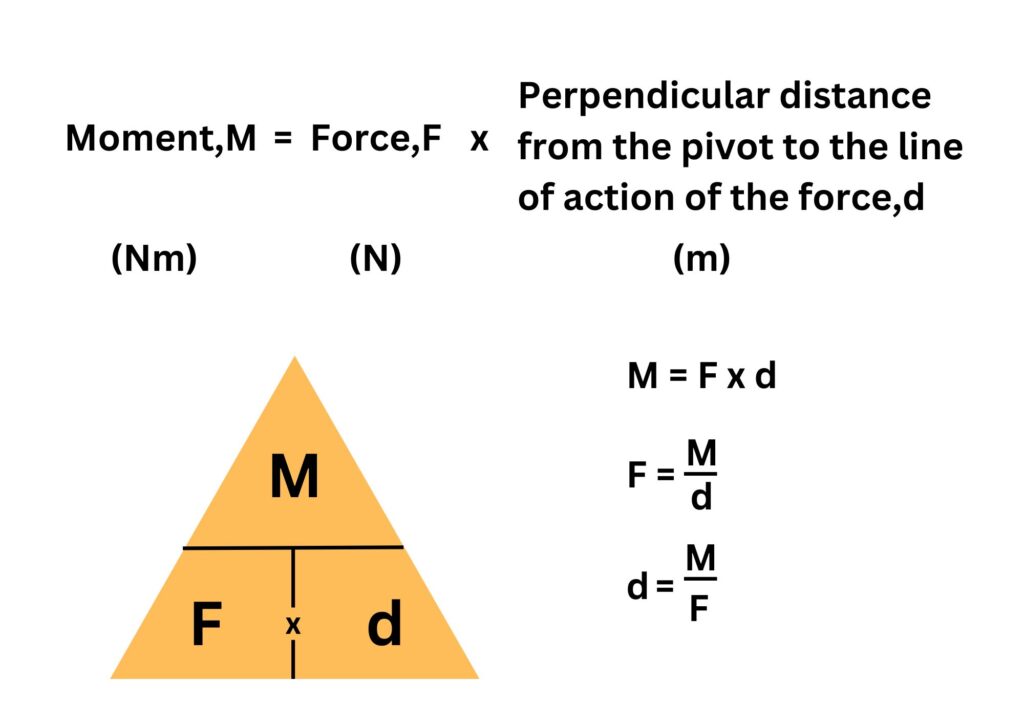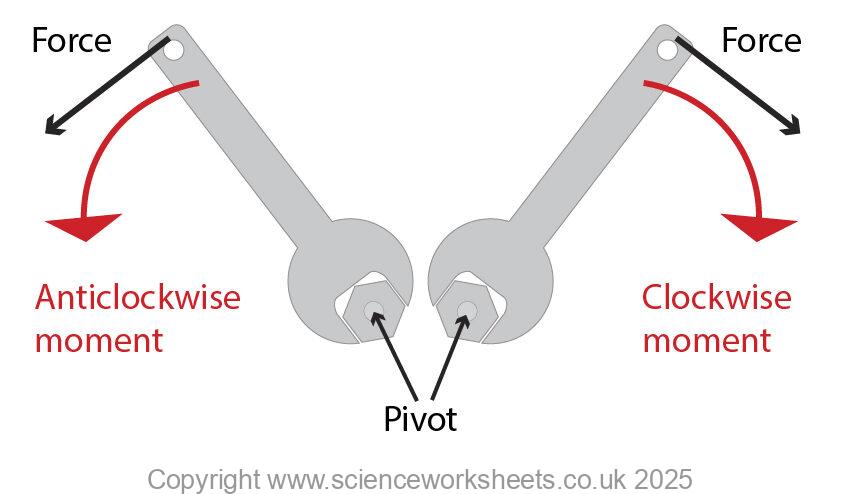AQA GCSE Introduction to Moments(Physics)
Introduction to Moments
A force or a system of forces may cause an object to rotate.
Below is an example of a single force acting:

In the example above is a force is applied to the fan blade it will start to rotate. If the direction of this force reverses, then the direction of rotation will reverse.
It is also possible for a system of forces to act on an object, as shown below:

Although the two forces are in opposite directions, they do not cancel, because they do not originate from the same point.
Both forces work together, acting on the roundabout to make it rotate anticlockwise.
Moments
A moment is defined as the turning effect of a force.
The moment will turn the object about a pivot (turning point), such as the spanner turning the nut below.

The size of the turning effect, or moment will depend on both:
1.Size of the applied force in Newtons,N
2. Perpendicular distance from the pivot to the line of action of the force, in metres, m. Perpendicular just means that the force arrow will be 90 degrees to the direction of the distance as shown above.
Calculating Moments.

If either the force is increased, or the distance increases, then the moment will also increase.
Sample questions
1.A spanner is used to turn a nut. A force of 40N is applied at a distance of 0.5m from the pivot. Calculate the size of the moment
Moment = Force x distance
Moment = 40N x 0.5m = 20Nm
2.The spanner in the previous question could not turn the nut. So, a longer spanner was used which was double the length of the previous spanner. Explain in terms of moments why this would make it easier to turn the nut.
If the spanner is twice the length, then the total moment generated will double, because the distance doubles.
Moment = Force x distance
Moment = 40N x 1m = 40Nm.
A larger moment will turn the nut more easily.
3. A moment of 300Nm is generated by using a lever. The force is applied at 2m from the pivot. Calculate the force applied
Force = Moment/distance
Force = 300Nm/2m = 150N
Clockwise and Anticlockwise moments.
The turning effect of the force can cause either a clockwise or anticlockwise moment.

Sample questions
1.A force of 20N is applied to a lever using a distance from the pivot of 60cm. Calculate the moment produced
2. Use the diagram below to help you to answer the question

A force of 100N applied where the force arrow is shown. Calculate the size of the anticlockwise moment
3. Use the image of the screwdriver opening the paint tin to help you to answer the following question:

Explain in terms of moments how a screwdriver can make it easier to open a tin of paint.
Absorption and Emission of EM Radiation
JJ Thomson and Plum pudding model
Ernest Rutherford and the Nuclear Model
Niels Bohr changing the Nuclear Model
Discovering the Proton and Neutron
Measuring radiation from radioactivity
Radiation types and properties
Random nature of radioactive decay
Radioactive contamination or irradiation
Hazards of contamination and irradiation
Studies on the effects of radiation on humans
Different half lives of radioactive isotopes
Nuclear Fission Chain Reaction
Writing nuclear fission equations
Drawing ray diagrams for a concave lens
Drawing Ray Diagram to produce a virtual image for a convex lens
Drawing ray diagram to produce a real image for a convex lens.
Specular and Diffuse Reflection
Seeing Coloured Objects Part 2
Viewing objects through coloured filters
Transparent, Translucent and Opaque